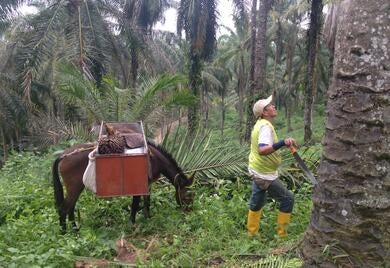
Addressing Climate Risk: Five Steps to Get Started
The pandemic has given us all a crash course in dealing with crises, becoming a sneak peak into what a man-made global disaster that disproportionately impacts the poor and vulnerable can cause. Climate change can be very similar, and knowing how to navigate and gauge its risks even harder.

Four Ways to Get the Most out of Palm Oil in Latin America and the Caribbean
What do soap, Ben and Jerry’s, and KitKat bars have in common? They all contain palm oil, an oil produced by the oil palm tree. Indonesia and Malaysia produce the vast majority of the world’s supply and have experienced significant environmental consequences as a result. Now the crop’s profitability is attracting interest in other tropical climates, including Latin America and the Caribbean.

How to celebrate Earth Day? Five ways to go about it.
“Why should I care about future generations? What have they ever done for me?” American comedian Julius “Groucho” Marx once joked. Fortunately, there is Earth Day. It offers an opportunity to reflect on that very question. Today marks the 45th anniversary of the conception of the modern environmental movement. And by celebrating Earth Day in companies, schools and households, we can raise awareness and explore why we might want to care about future generations.

Six Takeaways on the Growth of Palm Oil in Latin America
As I have noted before in this space, there are a number of risks and opportunities associated with palm oil. Among other negative impacts, expansion of palm oil plantations drives deforestation in many tropical countries, resulting in enormous carbon emissions. However, palm oil’s high productivity makes it a profitable investment and it has the potential to bring wealth and employment to rural areas.

Is Investment in Palm Oil Certification Worth It?
Palm oil has a terrible reputation. Especially among environmental and social advocates, palm oil is viewed as the crop responsible for a large-scale deforestation, particularly in Southeast Asia. Deforestation of carbon-rich forests leads to greenhouse gas emissions; between 2001 and 2010, palm oil-driven land-use change resulted in an average of 216-268 million tons of CO2 equivalent per year in Indonesia alone. For some perspective, that’s equivalent to the emissions from driving more than 45 million cars over the course of a year! Evidence also suggests labor rights violations, including child labor, at many plantations.

PEDAL YOUR BIKE. 3 Rides for Sustainability. #COP20
Leaders from government, civil society and the private sector are gathered in Peru this week for the final days of the 20th session of the Conference of Parties (COP) to define the way forward on climate change. Bringing climate change to the world stage communicates the urgency of the issue. Many companies are already engaged, and some have even based their business models on green principles. Bicycles are one tool. Check out three rides for sustainability: